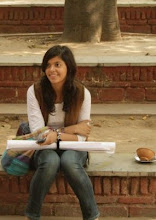The Invisible Cities by Italo Calvino, explores various themes of life, death, love and desire within the descriptions of cities that young Marco Polo gives to Kublai Khan, king of Tartar. Kublai Khan realizes that his empire has now grown too vast to be governed properly as he calls it the ‘endless formless ruin’; he believes that the inferences he takes from the different existing lands as narrated by Polo would help to save the kingdom. Thus begins the account of fifty five short descriptions put together in eleven categories.
It is evident that the cities that Marco Polo describes are surreal when reflected upon literally. However, at a metaphorical level, these cities, these people, these places exist. Calvino uses these imaginary cities to explore a rather realistic generalization about urban life. The cities that Marco Polo describes are then discussed in the dialogue between him and Kublai Khan to give the reader a more firm ground for understanding. It is for the reader to not get lost in the depiction of each city, but rather understand the functioning of all cities; how they emerge, the ideology with which they run, how they collapse.
Calvino uses Marco Polo’s travels in the various cities to explore themes like desire and how desire leads to destruction in some cases. Despite the sly and subtle references in various city descriptions, this idea is explored literally in the account of Zobeidi. This is the city that formed as a consequence of various men chasing the same dream of an imaginary woman. However Calvino reveals how this rampant desire leads to nothing but an ‘ugly city’, a ‘trap’.
Another interesting theme that Calvino explores is that of communication. Towards the beginning, Kublai Khan and Marco Polo are incapable of speaking the same language; yet they manage conversation based on expressions, gestures and actions. It can be seen that Calvino tries to reveal that we are all the same. Despite the differences in country, language or religion, we all have similar needs and requirements. We are all capable of understanding each other without the presence of any level of advancement like language.
The final city that is described contains layers within layers of alternating micro cities; these alternate between just and unjust. Here Calvino explores the idea that despite a society being unfair and evil, it can be converted in a better, more positive society when nurtured from within. When relating this to our world, we realize that we are already living in an unjust world, and this brief description of Polo gives a hope of a better society to emerge.


No comments:
Post a Comment